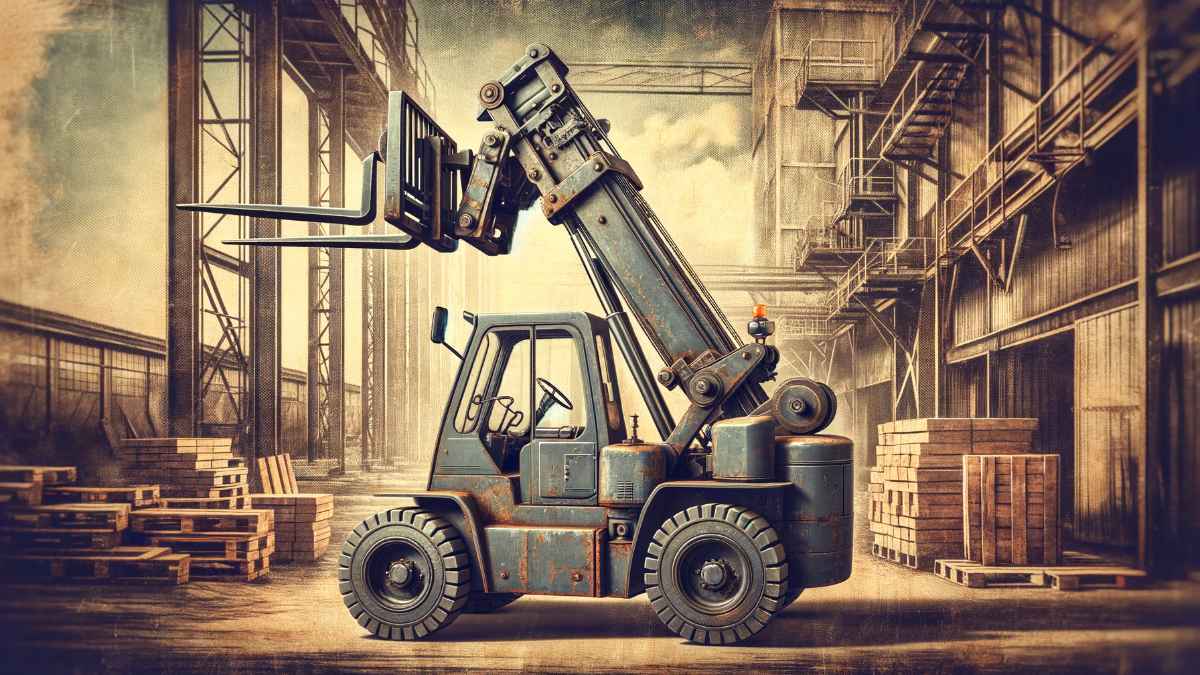The Evolution of Telescopic Handler Forklifts (1957)
Introduction
Telescopic handler forklifts, commonly known as telehandlers, have played a crucial role in the construction and material-handling industries. While forklifts have been around for decades, 1957 marked a pivotal moment in their evolution. This article delves into the history of telescopic handler forklifts 1957, their significance, and how they transformed heavy lifting and industrial operations.
The Birth of Telescopic Handler Forklifts in 1957
Understanding the Need for Advanced Forklifts
By the mid-20th century, industries faced increasing demands for equipment capable of handling heavier loads with greater flexibility. Traditional forklifts lacked the reach and versatility required for construction, agriculture, and industrial applications. This gap led to the innovation of the telescopic handler forklift.
Key Innovations Introduced in 1957
- Extended Reach & Telescoping Boom: Unlike conventional forklifts, telehandlers in 1957 were designed with extendable booms, allowing them to lift materials to greater heights.
- Improved Load Capacity: These forklifts had stronger hydraulic systems, making them more capable of handling heavy industrial materials.
- Versatile Attachments: The ability to switch between forks, buckets, and lifting hooks improved their utility across industries.
How Telescopic Handler Forklifts Transformed Industries
1. Revolutionizing Construction & Warehousing
In 1957, the introduction of telehandlers drastically improved construction site efficiency. Workers could now lift heavy materials to previously unreachable heights, reducing manual labor and increasing productivity.
2. Enhancing Agricultural Operations
Farmers quickly adopted telehandlers for lifting hay bales, transporting goods, and maintaining large barns. Their versatility allowed them to function as both forklifts and small cranes.
3. Expanding Industrial Applications
Industries requiring precise material placement benefited greatly from telescopic handlers. Their adaptability made them a staple in manufacturing plants, shipyards, and warehouses.
Evolution of Telescopic Handler Forklifts Since 1957
1957-1970s: Early Innovations
- Introduction of hydraulic stabilizers for better balance
- Enhancement in engine power and fuel efficiency
- Increased boom extension capabilities
1980s-2000s: Technological Advancements
- Development of computerized load management systems
- Integration of safety features such as load sensors and operator cabins
- Expansion of electric and hybrid models
Modern-Day Telehandlers (2025 & Beyond)
- AI-assisted lifting operations
- Autonomous telehandlers with GPS navigation
- Enhanced environmental-friendly options such as solar-powered forklifts
Key Features of Telescopic Handler Forklifts
| Feature | Description |
|---|---|
| Telescopic Boom | Extends to lift loads to higher places |
| Hydraulic Stability | Ensures safety when lifting heavy loads |
| Multi-Purpose Attachments | Forks, buckets, and cranes for diverse applications |
| Operator Comfort | Enclosed cabins for protection and efficiency |
| Advanced Safety Controls | Sensors and alarms for load management |

FAQs
1. What makes telescopic handler forklifts different from standard forklifts?
Unlike standard forklifts, telehandlers have extendable booms, allowing them to reach higher and handle varied attachments for different tasks.
2. Why was 1957 significant for telescopic handler forklifts?
1957 marked the introduction of telescoping booms, transforming forklifts from basic lifting tools to multi-functional industrial machines.
3. How did telehandlers impact the construction industry?
They improved efficiency, allowing workers to move materials faster, reduce labor intensity, and increase overall productivity.
4. Are modern telehandlers different from those in 1957?
Yes, today’s telehandlers feature AI-driven controls, electric models, and enhanced safety systems, making them far more efficient.
5. Can telescopic handlers be used in agriculture?
Yes, farmers use them for lifting hay bales, transporting feed, and maintaining large-scale farms.
6. What are the key factors to consider when choosing a telehandler?
Key factors include load capacity, reach height, stability features, and the type of attachments available.
Conclusion
The introduction of telescopic handler forklifts in 1957 was a game-changer for multiple industries. From revolutionizing construction and material handling to transforming agricultural applications, these machines have continuously evolved to meet modern-day demands. As we move toward AI-driven and eco-friendly solutions, the legacy of 1957 telehandlers remains a foundation for future advancements in heavy machinery.

